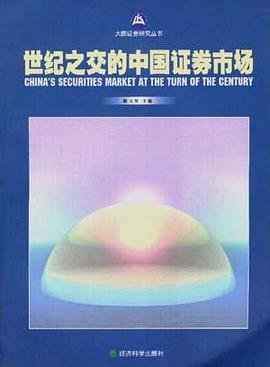

具体描述
本书是以访谈录的形式揭示了游戏设计思路和制作方法以及游戏开发与技巧的经验,目的是让既没有开发经费又没有经验的新手设计出好的游戏。
全书以前期策划、制作过程和后期运作为框架,按照游戏制作的各个阶段揭示一个个著名游戏幕后的灵感与运作技巧。展示了业界游戏大师们就许多最核心的问题各抒己见的观点,并且道出了各自多年的经验与感悟。
本书既可供游戏设计的新手作为入门读物,更是所有从事游戏设计的人员的一本难觅的必读宝典。
作者简介
目录信息
第1部分 前期准备
第1章 游戏类型和游戏视角
1.1 游戏类型
1.1.1 动作类
1.1.2 策略类
1.1.3 冒险类
1.1.4 角色扮演类(RPG)
1.1.5 体育类
1.1.6 模拟类
1.1.7 解谜游戏(或称经典游戏)
1.2 游戏视角
1.2.1 第一人称视角
1.2.2 第三人称视角
1.2.3 俯视视角
1.2.4 立体视角
1.2.5 平面、单方向视角
1.2.6 基于文字的游戏
第2章 游戏设计概要:动作和策略游戏
2.1 动作/游艺走廊游戏
2.1.1 Nintendo公司的Shigeru Miyamoto
2.1.2 Accolade公司的Kurt Arnlund
2.1.3 Confounding Factor公司的Toby Gard
2.1.4 Red Storm Entertainment公司的Carl Schnurr
2.1.5 Valve Software公司的Gabe Newell
2.1.6 Epic Games公司的Cliff Bleszinski
2.1.7 Shiny Entertainment公司的David Perry
2.1.8 Outrage Entertainment公司的Matthew Toschlog
2.1.9 Surreal Software公司的Alan Patmore
2.1.10 Hasbro Interactive公司的David Walls
2.1.11 Monolith公司的Jay Wilson
2.1.12 Raven Software公司的Jon Zuk
2.2 策略游戏
2.2.1 Firaxis Games公司的Sid Meier
2.2.2 Lionhead Studios公司的Peter Molyneux
2.2.3 Stainlesss Steel Studios公司的Rick Goodman
2.2.4 Ensemble Studios公司的Bruce C.Shelley
2.2.5 Firaxis Games公司的Brian Reynolds
2.2.6 Gas Powered Games公司的Chris Taylor
2.2.7 Hothouse Creations公司的Peter Moreland
2.2.8 Interplay公司的Chip Bumgardner
2.2.9 Interplay公司的Chris Taylor
2.2.10 Psgnosis公司的Mark Green
2.2.11 Blue Byte公司的Wolfgang Walk
2.2.12 Blue Byte公司的Torsten Hess
第3章 游戏设计概要:冒险类、角色扮演类、体育类、解谜类和模拟现实类
3.1 冒险游戏
3.1.1 Legend Entertainment公司的Bob Bates
3.1.2 Humongous Entertainment公司的Ron Gilbert
3.1.3 Dreamforge Intertainment公司的Chad Freeman
3.1.4 SouthPeak Interactive公司的Lee Sheldon
3.1.5 Sierra公司的Roberta Williams
3.2 角色扮演游戏(RPG)
3.2.1 Blizzard Entertainment公司的Matt Householder
3.2.2 BioWare公司的Ray Muzyka
3.2.3 ION Storm公司的Tom Hall
3.3 体育游戏
3.3.1 Electronic Arts公司的Sean House
3.3.2 Electronic Arts公司的Steve Coallier
3.4 解谜游戏
3.4.1 Microsoft公司的Alexey Pajitnov
3.4.2 Actual Entertainment公司的Franz Lanzinger
3.4.3 nineCo公司的Stuart Roseman
3.5 模拟现实游戏
3.5.1 Blue Fang Games公司的Adam Levesque
3.5.2 Origin Systems公司的Alien Jackson
第4章 创建人物、情节图板和设计文档
4.1 Al Lowe Assoclates公司的Al Lowe
4.2 Confounding Factor公司的Toby Gard
4.3 Nintendo公司的Shigeru Miyamoto
4.4 Shiny Entertainment公司的David Perry
4.5 3D Realms公司的George Broussard
4.6 Sierra On-Line公司的Jane Jensen
4.6.1 Gabriel Knisht Ⅲ设计文档的摘录
4.7 Sierra On-Line公司的Roberta Williams
4.8 Yosemite Entertainment公司的Mare Hudgins
4.9 Humongous Entertainment公司的Ron Gilbert
4.10 ION Storm公司的Tom Hall
4.11 Ritual Entertainment公司的Joe Selinske
第5章 谜题设计
5.1 Legend Entertainment公司的Bob Bates
5.2 Sierra公司的Jane Jensen
5.3 Westwood Studios公司的Louis Castle
5.4 Sierra On-Line公司的Roberta Williams
第6章 关卡设计
6.1 id Software公司的Tim Willits
6.1.1 单人游戏的关卡设计
6.1.2 对决游戏的关卡设计
6.1.3 夺取军旗
6.2 Ritual Entertainment公司的Levelord
6.2.1 有趣的因素
6.2.2 游戏的情节和玩家的相互作用
6.2.3 真实性
6.3 id Software公司的Paul Jaquays
6.3.1 Jaquavs关于设计的26条技巧
6.3.2 Paul在游戏设计上的建议
6.4 ION Storm公司的John Romero
6.5 Epic MegaGames公司的Cliff Bleszinski
6.5.1 几何建筑和整体材质
6.5.2 环境的照明
6.5.3 诡计、陷阱和谜题
6.5.4 怪物、弹药和补充体力的设置(游戏流程)
6.5.5 戏剧效果
6.6 Valve Software公司的Mare Laidlaw
6.6.1 工具的限制
6.6.2 制订计划
6.6.3 注重交流
6.6.4 创造性
6.7 Raven Software公司的Eric Biessman
6.8 Oddworld Inhabitants公司的Paul O'Connor
第7章 任务设计
7.1 Blizzard Entertainment公司的Rob Pardo
7.1.1 保持简洁
7.1.2 设计初稿
7.1.3 艺术愉悦性
7.1.4 清晰的概要与目标
7.1.5 避免由剧情因素引起的游戏中断
7.1.6 使难度逐渐上升
7.1.7 分散矿产资源(StarCraft专用)
7.1.8 测试、测试、再测试
7.1.9 StarCraft:Brood War中战役的设计步骤
7.1.10 平衡军事力量
7.2 Looking Glass Studios公司的Timothy J.Stellmach
7.3 Ensemble Studios公司的Greg Street
7.4 Raven Software公司的Jon Zuk
第2部分 制作过程
第8章 编程
8.1 Accolade公司的Kurt Arnlund
8.1.1 在时间和雄心之间的平衡
8.1.2 精确,非常地精确
8.1.3 最快的方法对最好的方法
8.2 Valve Software公司的Jay Stelly
8.3 Bungle Software公司的Charles Gough
8.4 Dynamix/Sierra公司的Michael D.McGrath
8.4.1 先设计,后编程
8.4.2 了解你的用户和对手
8.4.3 编程并不是一切
8.5 Origin Systems公司的Alien Jackson
8.5.1 保持引擎的数据驱动性
8.5.2 对已有引擎的试验
8.5.3 从静态的类和变量中脱离出来
8.6 Wombat Games公司的Ragnar Scheuermann
8.7 Ensemble Studios公司的Matt Pritchard
8.8 Dreamforge Intertainment公司的Chad Freeman
8.9 Surreal Software公司的Stuart Denman
8.9.1 多边形显示量与系统最低配置
8.9.2 人工智能
8.9.3 光线
8.10 Humongous Entertainment公司的Richard Moe
8.11 Cavedog公司的Kurt Pfeifer
8.11.1 事先制定清晰明了的设计
8.11.2 动用你所能负担的最大人数
8.11.3 留些时间进行研究与开发
8.12 Treyarch Invention公司的Jamie Fristrom
8.13 Prestostudios公司的Michael Saladino
8.13.1 绝不要低估汇编语言
8.13.2 不到最后时刻,没有代码是完美的
8.13.3 爱你的代码吧!但不要宠坏了“她”
8.14 Oddworld Inhabitants公司的Todd Johnson
8.15 Pyro Studios公司的Gonzo Suarez
8.15.1 游戏模型
8.15.2 逻辑接口
8.15.3 感觉或错觉
8.15.4 特性
第9章 人工智能(AI)
9.1 Firaxis Games公司的Brian Reynolds
9.1.1 不断重复的设计过程
9.1.2 从简单的开始
9.1.3 加倍或减半某些值
9.2 Ensemble Studios公司的Mario Grimani
9.3 CyberLife Technology公司的Toby Simpson
9.3.1 建模,而不是仿效
9.3.2 构思结构,而不是行为
9.3.3 大自然会给你极大的帮助
9.3.4 思考并使自己专业化
9.4 EA Sports公司的Scott Ors
9.4.1 真实感
9.4.2 真实与娱乐
9.4.3 简化AI编程
9.5 Marc Aubanel
9.6 Monolith Productions公司的Jay Wilson
第10章 游戏美工
10.1 Bungie Software公司的Mark Bernal
10.1.1 了解你的限制
10.1.2 不要依赖软件
10.1.3 团队合作
10.2 Cyan公司的Joshua Staub
10.2.1 世界的一致性
10.2.2 制作你自己的环境灯光效果
10.2.3 材质贴图
10.3 EA Sports公司的Bryce Cochrane
10.3.1 你并不孤独
10.3.2 抬起头来
10.3.3 准备接受来自任何人的批评
10.4 Electronics Arts公司的Nicholas J.Corea
10.4.1 将那些未预料到的事情考虑在内
10.4.2 让你的美工观点让步
10.4.3 在分配的时间内尽快完成工作
10.4.4 2D工具
10.4.5 3D工具
10.4.6 投入到工作中去
10.5 Bethesda Softworks公司的Hugh Riley
10.6 Valve Software公司的Ted Backman
10.6.1 精良的参考材料
10.6.2 接受批评
10.6.3 毅力
10.7 Yosemite Entertainment公司的Mare Hudgins
10.7.1 技术的限制
10.7.2 与美工师们共同讨论
10.7.3 依靠软件工具
10.8 Dreamforge Intertainment公司的Mike Nicholson
10.8.1 明确的想法
10.8.2 严格的爱护
10.8.3 创新性与可行性
10.8.4 了解你受到的限制
10.9 Westwood Studios公司的Louis Castle
10.10 Ritual Entertainment公司的Joel Thomas
10.11 id Software公司的Kevin Cloud
10.12 Ensemble Studios公司的Brad Crow
10.13 Raven Software公司的Joe Koberstein
10.14 Surreal Software公司的Mike Nichols
10.14.1 结构
10.14.2 美学
10.14.3 精致的细节
10.14.4 3D美工:3D Studio MAX和SOFTIMAGE
10.14.5 2D美工:Photoshop
10.14.6 了解造型
10.15 EA Sports公司的Tony Lupidi
10.16 CyberLife Technologies公司的Toby Simpson
第11章 动画制作
11.1 Valve Software公司的Ted Backman
11.1.1 动画和AI
11.1.2 使用参考素材
11.1.3 注意时间控制
11.2 Treyarch Invention公司的Peter Akemann
11.3 Ubi Soft公司的Jean-Francois Malouin
11.3.1 趣味性比真实性重要
11.3.2 理解人物动作
11.4 Oddworld Inhabitants公司的Scott Easley
11.5 Sierra Sports公司的Vance Cook
11.6 EA Sports公司的Evan Hirsch
11.7 Ensemble Studios公司的Brad Crow
第12章 用户界面(UI)和游戏控制
12.1 Sierra Sports公司的Vance Cook
12.1.1 外壳界面
12.1.2 游戏内界面
12.1.3 游戏控制界面
12.2 EA Sports公司的Scott Orr
12.3 EA Sports公司的Mare Aubanel
12.3.1 镜头与角色控制
12.3.2 保持简洁
12.3.3 按你的设想做下去,然后进行测试
12.3.4 试验各种想法,然后进行测试
12.3.5 在两个世界中都做到最好
12.4 Origin Systems公司的Richard“Lord British”Garriott
12.4.1 熟悉
12.4.2 锄耕机操作员综合症
12.5 Wombat Games公司的Ragnar Scheuermann
12.6 ION Storm公司的Tom Hall
12.7 Humongous Entertainment公司的Ron Gilbert
12.8 Relic Entertainment公司的Alex Garden
12.9 Psygnosis公司的Mark Green
12.10 把建议分类
12.10.1 Firaxis Games公司的Sid Meier
12.10.2 Blizzard North公司的Matt Householder
12.10.3 Monolith公司的Jay Wilson
第13章 声音引擎
13.1 Microsoft公司的Matthew Lee Johnston
13.1.1 熟悉开发者的世界
13.1.2 让你自己有用
13.1.3 打破模式
13.2 Tim Larkin
13.2.1 有创造性
13.2.2 从一开始就要有好的声音效果
13.3 Ensemble Studios公司的Chris Rippy
13.4 Humonsous Entertainment公司的Geoff Kirk
13.5 Valve Software公司的Keily Bailey
13.5.1 和其他工程师一同工作
13.5.2 有创造力,使用不同的素材
13.5.3 不断重复地测试声音
13.6 Raven Software公司的Kevin Schilder
13.6.1 创造性思考
13.6.2 夸大音效
13.6.3 注意处理过程
第14章 音乐与游戏
14.1 Yosemite Entertainment公司的Chance Thomas
14.2 “The Fat Man”George Sanger
14.3 Tommy Tallarico
14.4 Bobby Prince
14.5 LucasArts公司的Michael Land
14.5.1 亲自玩游戏
14.5.2 观众是游戏的“参与者”而不是“听众”或“旁观者”
14.5.3 掌握好表达的技巧
14.6 Valve Software公司的Keily Balley
14.6.1 配合游戏的基调
14.6.2 舒适的工作环境
14.6.3 在压力下工作
14.7 Blue Byte Software公司的Haiko Ruttmann
14.8 Oddworld Inhabitants公司的Ellen Meijers-Gabriel
第3部分 后期运作
第15章 游戏测试
15.1 Acclaim Entertainment公司的Carol Caracciolo
15.2 Electronic Arts公司的Sean House
15.3 Psygnosis公司的Mark Green
15.4 Interplay Productions公司的Chip Bumgardner
15.5 Interplay Productions公司的Chris Taylor
15.6 Blue Byte公司的Wolfgang Walk
15.7 Origin Systems公司的Richard Garriott
15.8 Firaxis Games公司的Sid Maier
15.9 Humongous Entertainment公司的Ron Gilbert
第16章 公关及发行
16.1 公关
16.1.1 Linn PR公司的Bill Linn
16.1.2 Sierra Studios公司的Genevieve Ostergard
16.1.3 Acclaim Entertainment公司的Michael Meyers
16.l.4 Acclaim Entertainment公司的Adam Kahn
16.2 发行
16.2.1 Cavedog Entertainment公司的Brandon Smith
16.2.2 Running with Scissors公司的Vince Desiderio
16.2.3 Sierra Studios公司的Doug Lombardi
16.2.4 Blue Byte公司的Wolfgang Walk
16.2.5 THQ公司的Liz Bell
第17章 游戏Web站点设计
17.1 Cubik Media and Marketing公司的Daniel Bray
17.2 Eidos Interactive公司的Sacha Fernandes
17.3 CyberNation公司的Matthew D'Andria
17.4 EA Sports公司的Chris Sivertsen
17.5 EA Sports公司的Barry Dorf
17.6 Ensemble Studios公司的Michael McCart
第18章 技术支持与客户服务
18.1 Eidos Interactive公司的Michael Keily
18.2 Interplay公司的Mark Linn
18.2.1 优良的数据库
18.2.2 正确的训练
18.2.3 做个好听众
18.3 3DO公司的Tom Bazzano
18.3.1 坚持到底
18.3.2 信息共享
18.3.3 礼待客户
18.4 Purple Moon公司的Carin Lockrem
18.5 Imagic Online公司的Rodney Hodge
第4部分 实现途径
第19章 DIY和共享软件的发展
19.1 Spiderweb Software公司的Jeff Vogel
19.2 Robinson Technologies公司的Seth A.Robinson
19.3 Silver Creek Entertainment公司的Jonas Stewart
19.4 Freeverse Software公司的Bryan Horling
19.5 Longbow Digital Arts公司的Seumas McNally
19.6 MoraffWare公司的Sieve Moraff
第20章 进入游戏行业
20.1 向销售商推荐你的游戏
20.1.1 Electronic Arts公司的Mitzi McGilvray
20.1.2 Pandemic Studios公司的Josh Resnick
20.1.3 THQ公司的Michael Rubinelli
20.1.4 VirtualSearch公司的Melanie Cambron
20.1.5 Actual Entertainment公司的Franz Lanzinger
20.1.6 Oddworld Inhabitants公司的Paul O'Connor
20.2 在游戏公司谋职
20.2.1 id Software公司的Paul Jaquays
20.2.2 id Software公司Kevin Cloud
20.2.3 Lionhead Studios公司的Peter Molyneux
20.2.4 PopTop Software公司的Phil Steinmeyer
20.2.5 THQ公司的Michael Rubinelli
20.2.6 Activision公司的Josh Resnick
20.2.7 Firaxis Games公司的Sid Meter
20.2.8 Origin Systems公司的Richard“Lord British”Garriott
20.2.9 Confounding Factor公司的Toby Gard
20.2.10 Sierra On-line公司Jane Jensen
20.2.11 Ensemble Studios公司的Matt Pritchard
20.2.12 PyroTechnix公司的Sinjin Bain
第21章 游戏代理商和猎头公司
21.1 ThinkBIG公司的Susan Lewis
21.2 Virtual Search公司的Melanie Cambron
21.2.1 简历
21.2.2 游戏样品
21.2.3 普遍错误和通用技巧
第22章 天才的设想――G.O.D之路
22.1 核心
22.2 使命
22.3 G.O.D的特点
22.4 游戏与销售
第23章 游戏设计学校
23.1 DigiPen Institute of Technology(www.digiPen.edu)
23.2 Full Sail(www.fullsall.com)
23.3.3 NBCC Miramichi(www.miramichi.nbcc.nb.ca)
23.4 其他学校介绍
第24章 因特网上的游戏设计资源
24.1 Computer Game Design
24.2 Computer Role-Playing Game Designer
24.3 DevGames.com
24.4 Gamasutra
24.5 Game Design
24.6 Game Design Newsgroup
24.7 Game Design @ Gameslice
24.8 Game Developer Magazine
24.9 Game Developer Resourcium
24.10 Game Development Search Engine
24.11 Gameslice
24.12 GamingInsider
24.13 Happy Puppy:The Biz
24.14 I Have No Words and I Must Design
24.15 Loony Grames
24.16 Murphy's Rlues
24.17 So,You Want to be a Computer Game Developer
24.18 Sweet Oblivion
24.19 Ultimate Gaming Resource-Company Directory
24.20 重要的有关游戏的电子杂志
24.21 GameSlice公司的游戏设计师Robin Ward
24.22 GameJobs.com的Rick Vandervoorn
第25章 主要会议、组织和奖励
25.1 会议及行业展示会
25.1.1 电子娱乐博览会(E3)
25.1.2 游戏开发者讨论会(GDC)
25.1.3 电子消费业展示会(ECTS)
25.1.4 Milia游戏会议(Milia Games)
25.1.5 SIGGRAPH
25.1.6 GamesCon
25.1.7 GenCon
25.1.8 Comdex,CES,MacWorld Expo,Toy Fair
25.2 组织团体
25.2.1 交互艺术和科学学会
25.2.2 国际游戏开发者协会(IGDN)
25.2.3 软件和信息产业协会(SIIA)
25.2.4 电脑游戏美术家协会
25.2.5 交互数字软件协会(IDSA)
25.2.6 电脑游戏开发者协会(CGDA)
25.2.7 美国人工智能协会(AAAI)
25.2.8 娱乐软件评估委员会(ESRB)
25.2.9 交互娱乐商业协会(IEMA)
25.2.10 因特同娱乐软件顾问委员会(RSACi)
25.2.11 欧洲休闲软件出版协会(ELSPA)
25.2.12 Bar-B-Q计划
第5部分 附录
附录 游戏业各人简历
· · · · · · (收起)
第1章 游戏类型和游戏视角
1.1 游戏类型
1.1.1 动作类
1.1.2 策略类
1.1.3 冒险类
1.1.4 角色扮演类(RPG)
1.1.5 体育类
1.1.6 模拟类
1.1.7 解谜游戏(或称经典游戏)
1.2 游戏视角
1.2.1 第一人称视角
1.2.2 第三人称视角
1.2.3 俯视视角
1.2.4 立体视角
1.2.5 平面、单方向视角
1.2.6 基于文字的游戏
第2章 游戏设计概要:动作和策略游戏
2.1 动作/游艺走廊游戏
2.1.1 Nintendo公司的Shigeru Miyamoto
2.1.2 Accolade公司的Kurt Arnlund
2.1.3 Confounding Factor公司的Toby Gard
2.1.4 Red Storm Entertainment公司的Carl Schnurr
2.1.5 Valve Software公司的Gabe Newell
2.1.6 Epic Games公司的Cliff Bleszinski
2.1.7 Shiny Entertainment公司的David Perry
2.1.8 Outrage Entertainment公司的Matthew Toschlog
2.1.9 Surreal Software公司的Alan Patmore
2.1.10 Hasbro Interactive公司的David Walls
2.1.11 Monolith公司的Jay Wilson
2.1.12 Raven Software公司的Jon Zuk
2.2 策略游戏
2.2.1 Firaxis Games公司的Sid Meier
2.2.2 Lionhead Studios公司的Peter Molyneux
2.2.3 Stainlesss Steel Studios公司的Rick Goodman
2.2.4 Ensemble Studios公司的Bruce C.Shelley
2.2.5 Firaxis Games公司的Brian Reynolds
2.2.6 Gas Powered Games公司的Chris Taylor
2.2.7 Hothouse Creations公司的Peter Moreland
2.2.8 Interplay公司的Chip Bumgardner
2.2.9 Interplay公司的Chris Taylor
2.2.10 Psgnosis公司的Mark Green
2.2.11 Blue Byte公司的Wolfgang Walk
2.2.12 Blue Byte公司的Torsten Hess
第3章 游戏设计概要:冒险类、角色扮演类、体育类、解谜类和模拟现实类
3.1 冒险游戏
3.1.1 Legend Entertainment公司的Bob Bates
3.1.2 Humongous Entertainment公司的Ron Gilbert
3.1.3 Dreamforge Intertainment公司的Chad Freeman
3.1.4 SouthPeak Interactive公司的Lee Sheldon
3.1.5 Sierra公司的Roberta Williams
3.2 角色扮演游戏(RPG)
3.2.1 Blizzard Entertainment公司的Matt Householder
3.2.2 BioWare公司的Ray Muzyka
3.2.3 ION Storm公司的Tom Hall
3.3 体育游戏
3.3.1 Electronic Arts公司的Sean House
3.3.2 Electronic Arts公司的Steve Coallier
3.4 解谜游戏
3.4.1 Microsoft公司的Alexey Pajitnov
3.4.2 Actual Entertainment公司的Franz Lanzinger
3.4.3 nineCo公司的Stuart Roseman
3.5 模拟现实游戏
3.5.1 Blue Fang Games公司的Adam Levesque
3.5.2 Origin Systems公司的Alien Jackson
第4章 创建人物、情节图板和设计文档
4.1 Al Lowe Assoclates公司的Al Lowe
4.2 Confounding Factor公司的Toby Gard
4.3 Nintendo公司的Shigeru Miyamoto
4.4 Shiny Entertainment公司的David Perry
4.5 3D Realms公司的George Broussard
4.6 Sierra On-Line公司的Jane Jensen
4.6.1 Gabriel Knisht Ⅲ设计文档的摘录
4.7 Sierra On-Line公司的Roberta Williams
4.8 Yosemite Entertainment公司的Mare Hudgins
4.9 Humongous Entertainment公司的Ron Gilbert
4.10 ION Storm公司的Tom Hall
4.11 Ritual Entertainment公司的Joe Selinske
第5章 谜题设计
5.1 Legend Entertainment公司的Bob Bates
5.2 Sierra公司的Jane Jensen
5.3 Westwood Studios公司的Louis Castle
5.4 Sierra On-Line公司的Roberta Williams
第6章 关卡设计
6.1 id Software公司的Tim Willits
6.1.1 单人游戏的关卡设计
6.1.2 对决游戏的关卡设计
6.1.3 夺取军旗
6.2 Ritual Entertainment公司的Levelord
6.2.1 有趣的因素
6.2.2 游戏的情节和玩家的相互作用
6.2.3 真实性
6.3 id Software公司的Paul Jaquays
6.3.1 Jaquavs关于设计的26条技巧
6.3.2 Paul在游戏设计上的建议
6.4 ION Storm公司的John Romero
6.5 Epic MegaGames公司的Cliff Bleszinski
6.5.1 几何建筑和整体材质
6.5.2 环境的照明
6.5.3 诡计、陷阱和谜题
6.5.4 怪物、弹药和补充体力的设置(游戏流程)
6.5.5 戏剧效果
6.6 Valve Software公司的Mare Laidlaw
6.6.1 工具的限制
6.6.2 制订计划
6.6.3 注重交流
6.6.4 创造性
6.7 Raven Software公司的Eric Biessman
6.8 Oddworld Inhabitants公司的Paul O'Connor
第7章 任务设计
7.1 Blizzard Entertainment公司的Rob Pardo
7.1.1 保持简洁
7.1.2 设计初稿
7.1.3 艺术愉悦性
7.1.4 清晰的概要与目标
7.1.5 避免由剧情因素引起的游戏中断
7.1.6 使难度逐渐上升
7.1.7 分散矿产资源(StarCraft专用)
7.1.8 测试、测试、再测试
7.1.9 StarCraft:Brood War中战役的设计步骤
7.1.10 平衡军事力量
7.2 Looking Glass Studios公司的Timothy J.Stellmach
7.3 Ensemble Studios公司的Greg Street
7.4 Raven Software公司的Jon Zuk
第2部分 制作过程
第8章 编程
8.1 Accolade公司的Kurt Arnlund
8.1.1 在时间和雄心之间的平衡
8.1.2 精确,非常地精确
8.1.3 最快的方法对最好的方法
8.2 Valve Software公司的Jay Stelly
8.3 Bungle Software公司的Charles Gough
8.4 Dynamix/Sierra公司的Michael D.McGrath
8.4.1 先设计,后编程
8.4.2 了解你的用户和对手
8.4.3 编程并不是一切
8.5 Origin Systems公司的Alien Jackson
8.5.1 保持引擎的数据驱动性
8.5.2 对已有引擎的试验
8.5.3 从静态的类和变量中脱离出来
8.6 Wombat Games公司的Ragnar Scheuermann
8.7 Ensemble Studios公司的Matt Pritchard
8.8 Dreamforge Intertainment公司的Chad Freeman
8.9 Surreal Software公司的Stuart Denman
8.9.1 多边形显示量与系统最低配置
8.9.2 人工智能
8.9.3 光线
8.10 Humongous Entertainment公司的Richard Moe
8.11 Cavedog公司的Kurt Pfeifer
8.11.1 事先制定清晰明了的设计
8.11.2 动用你所能负担的最大人数
8.11.3 留些时间进行研究与开发
8.12 Treyarch Invention公司的Jamie Fristrom
8.13 Prestostudios公司的Michael Saladino
8.13.1 绝不要低估汇编语言
8.13.2 不到最后时刻,没有代码是完美的
8.13.3 爱你的代码吧!但不要宠坏了“她”
8.14 Oddworld Inhabitants公司的Todd Johnson
8.15 Pyro Studios公司的Gonzo Suarez
8.15.1 游戏模型
8.15.2 逻辑接口
8.15.3 感觉或错觉
8.15.4 特性
第9章 人工智能(AI)
9.1 Firaxis Games公司的Brian Reynolds
9.1.1 不断重复的设计过程
9.1.2 从简单的开始
9.1.3 加倍或减半某些值
9.2 Ensemble Studios公司的Mario Grimani
9.3 CyberLife Technology公司的Toby Simpson
9.3.1 建模,而不是仿效
9.3.2 构思结构,而不是行为
9.3.3 大自然会给你极大的帮助
9.3.4 思考并使自己专业化
9.4 EA Sports公司的Scott Ors
9.4.1 真实感
9.4.2 真实与娱乐
9.4.3 简化AI编程
9.5 Marc Aubanel
9.6 Monolith Productions公司的Jay Wilson
第10章 游戏美工
10.1 Bungie Software公司的Mark Bernal
10.1.1 了解你的限制
10.1.2 不要依赖软件
10.1.3 团队合作
10.2 Cyan公司的Joshua Staub
10.2.1 世界的一致性
10.2.2 制作你自己的环境灯光效果
10.2.3 材质贴图
10.3 EA Sports公司的Bryce Cochrane
10.3.1 你并不孤独
10.3.2 抬起头来
10.3.3 准备接受来自任何人的批评
10.4 Electronics Arts公司的Nicholas J.Corea
10.4.1 将那些未预料到的事情考虑在内
10.4.2 让你的美工观点让步
10.4.3 在分配的时间内尽快完成工作
10.4.4 2D工具
10.4.5 3D工具
10.4.6 投入到工作中去
10.5 Bethesda Softworks公司的Hugh Riley
10.6 Valve Software公司的Ted Backman
10.6.1 精良的参考材料
10.6.2 接受批评
10.6.3 毅力
10.7 Yosemite Entertainment公司的Mare Hudgins
10.7.1 技术的限制
10.7.2 与美工师们共同讨论
10.7.3 依靠软件工具
10.8 Dreamforge Intertainment公司的Mike Nicholson
10.8.1 明确的想法
10.8.2 严格的爱护
10.8.3 创新性与可行性
10.8.4 了解你受到的限制
10.9 Westwood Studios公司的Louis Castle
10.10 Ritual Entertainment公司的Joel Thomas
10.11 id Software公司的Kevin Cloud
10.12 Ensemble Studios公司的Brad Crow
10.13 Raven Software公司的Joe Koberstein
10.14 Surreal Software公司的Mike Nichols
10.14.1 结构
10.14.2 美学
10.14.3 精致的细节
10.14.4 3D美工:3D Studio MAX和SOFTIMAGE
10.14.5 2D美工:Photoshop
10.14.6 了解造型
10.15 EA Sports公司的Tony Lupidi
10.16 CyberLife Technologies公司的Toby Simpson
第11章 动画制作
11.1 Valve Software公司的Ted Backman
11.1.1 动画和AI
11.1.2 使用参考素材
11.1.3 注意时间控制
11.2 Treyarch Invention公司的Peter Akemann
11.3 Ubi Soft公司的Jean-Francois Malouin
11.3.1 趣味性比真实性重要
11.3.2 理解人物动作
11.4 Oddworld Inhabitants公司的Scott Easley
11.5 Sierra Sports公司的Vance Cook
11.6 EA Sports公司的Evan Hirsch
11.7 Ensemble Studios公司的Brad Crow
第12章 用户界面(UI)和游戏控制
12.1 Sierra Sports公司的Vance Cook
12.1.1 外壳界面
12.1.2 游戏内界面
12.1.3 游戏控制界面
12.2 EA Sports公司的Scott Orr
12.3 EA Sports公司的Mare Aubanel
12.3.1 镜头与角色控制
12.3.2 保持简洁
12.3.3 按你的设想做下去,然后进行测试
12.3.4 试验各种想法,然后进行测试
12.3.5 在两个世界中都做到最好
12.4 Origin Systems公司的Richard“Lord British”Garriott
12.4.1 熟悉
12.4.2 锄耕机操作员综合症
12.5 Wombat Games公司的Ragnar Scheuermann
12.6 ION Storm公司的Tom Hall
12.7 Humongous Entertainment公司的Ron Gilbert
12.8 Relic Entertainment公司的Alex Garden
12.9 Psygnosis公司的Mark Green
12.10 把建议分类
12.10.1 Firaxis Games公司的Sid Meier
12.10.2 Blizzard North公司的Matt Householder
12.10.3 Monolith公司的Jay Wilson
第13章 声音引擎
13.1 Microsoft公司的Matthew Lee Johnston
13.1.1 熟悉开发者的世界
13.1.2 让你自己有用
13.1.3 打破模式
13.2 Tim Larkin
13.2.1 有创造性
13.2.2 从一开始就要有好的声音效果
13.3 Ensemble Studios公司的Chris Rippy
13.4 Humonsous Entertainment公司的Geoff Kirk
13.5 Valve Software公司的Keily Bailey
13.5.1 和其他工程师一同工作
13.5.2 有创造力,使用不同的素材
13.5.3 不断重复地测试声音
13.6 Raven Software公司的Kevin Schilder
13.6.1 创造性思考
13.6.2 夸大音效
13.6.3 注意处理过程
第14章 音乐与游戏
14.1 Yosemite Entertainment公司的Chance Thomas
14.2 “The Fat Man”George Sanger
14.3 Tommy Tallarico
14.4 Bobby Prince
14.5 LucasArts公司的Michael Land
14.5.1 亲自玩游戏
14.5.2 观众是游戏的“参与者”而不是“听众”或“旁观者”
14.5.3 掌握好表达的技巧
14.6 Valve Software公司的Keily Balley
14.6.1 配合游戏的基调
14.6.2 舒适的工作环境
14.6.3 在压力下工作
14.7 Blue Byte Software公司的Haiko Ruttmann
14.8 Oddworld Inhabitants公司的Ellen Meijers-Gabriel
第3部分 后期运作
第15章 游戏测试
15.1 Acclaim Entertainment公司的Carol Caracciolo
15.2 Electronic Arts公司的Sean House
15.3 Psygnosis公司的Mark Green
15.4 Interplay Productions公司的Chip Bumgardner
15.5 Interplay Productions公司的Chris Taylor
15.6 Blue Byte公司的Wolfgang Walk
15.7 Origin Systems公司的Richard Garriott
15.8 Firaxis Games公司的Sid Maier
15.9 Humongous Entertainment公司的Ron Gilbert
第16章 公关及发行
16.1 公关
16.1.1 Linn PR公司的Bill Linn
16.1.2 Sierra Studios公司的Genevieve Ostergard
16.1.3 Acclaim Entertainment公司的Michael Meyers
16.l.4 Acclaim Entertainment公司的Adam Kahn
16.2 发行
16.2.1 Cavedog Entertainment公司的Brandon Smith
16.2.2 Running with Scissors公司的Vince Desiderio
16.2.3 Sierra Studios公司的Doug Lombardi
16.2.4 Blue Byte公司的Wolfgang Walk
16.2.5 THQ公司的Liz Bell
第17章 游戏Web站点设计
17.1 Cubik Media and Marketing公司的Daniel Bray
17.2 Eidos Interactive公司的Sacha Fernandes
17.3 CyberNation公司的Matthew D'Andria
17.4 EA Sports公司的Chris Sivertsen
17.5 EA Sports公司的Barry Dorf
17.6 Ensemble Studios公司的Michael McCart
第18章 技术支持与客户服务
18.1 Eidos Interactive公司的Michael Keily
18.2 Interplay公司的Mark Linn
18.2.1 优良的数据库
18.2.2 正确的训练
18.2.3 做个好听众
18.3 3DO公司的Tom Bazzano
18.3.1 坚持到底
18.3.2 信息共享
18.3.3 礼待客户
18.4 Purple Moon公司的Carin Lockrem
18.5 Imagic Online公司的Rodney Hodge
第4部分 实现途径
第19章 DIY和共享软件的发展
19.1 Spiderweb Software公司的Jeff Vogel
19.2 Robinson Technologies公司的Seth A.Robinson
19.3 Silver Creek Entertainment公司的Jonas Stewart
19.4 Freeverse Software公司的Bryan Horling
19.5 Longbow Digital Arts公司的Seumas McNally
19.6 MoraffWare公司的Sieve Moraff
第20章 进入游戏行业
20.1 向销售商推荐你的游戏
20.1.1 Electronic Arts公司的Mitzi McGilvray
20.1.2 Pandemic Studios公司的Josh Resnick
20.1.3 THQ公司的Michael Rubinelli
20.1.4 VirtualSearch公司的Melanie Cambron
20.1.5 Actual Entertainment公司的Franz Lanzinger
20.1.6 Oddworld Inhabitants公司的Paul O'Connor
20.2 在游戏公司谋职
20.2.1 id Software公司的Paul Jaquays
20.2.2 id Software公司Kevin Cloud
20.2.3 Lionhead Studios公司的Peter Molyneux
20.2.4 PopTop Software公司的Phil Steinmeyer
20.2.5 THQ公司的Michael Rubinelli
20.2.6 Activision公司的Josh Resnick
20.2.7 Firaxis Games公司的Sid Meter
20.2.8 Origin Systems公司的Richard“Lord British”Garriott
20.2.9 Confounding Factor公司的Toby Gard
20.2.10 Sierra On-line公司Jane Jensen
20.2.11 Ensemble Studios公司的Matt Pritchard
20.2.12 PyroTechnix公司的Sinjin Bain
第21章 游戏代理商和猎头公司
21.1 ThinkBIG公司的Susan Lewis
21.2 Virtual Search公司的Melanie Cambron
21.2.1 简历
21.2.2 游戏样品
21.2.3 普遍错误和通用技巧
第22章 天才的设想――G.O.D之路
22.1 核心
22.2 使命
22.3 G.O.D的特点
22.4 游戏与销售
第23章 游戏设计学校
23.1 DigiPen Institute of Technology(www.digiPen.edu)
23.2 Full Sail(www.fullsall.com)
23.3.3 NBCC Miramichi(www.miramichi.nbcc.nb.ca)
23.4 其他学校介绍
第24章 因特网上的游戏设计资源
24.1 Computer Game Design
24.2 Computer Role-Playing Game Designer
24.3 DevGames.com
24.4 Gamasutra
24.5 Game Design
24.6 Game Design Newsgroup
24.7 Game Design @ Gameslice
24.8 Game Developer Magazine
24.9 Game Developer Resourcium
24.10 Game Development Search Engine
24.11 Gameslice
24.12 GamingInsider
24.13 Happy Puppy:The Biz
24.14 I Have No Words and I Must Design
24.15 Loony Grames
24.16 Murphy's Rlues
24.17 So,You Want to be a Computer Game Developer
24.18 Sweet Oblivion
24.19 Ultimate Gaming Resource-Company Directory
24.20 重要的有关游戏的电子杂志
24.21 GameSlice公司的游戏设计师Robin Ward
24.22 GameJobs.com的Rick Vandervoorn
第25章 主要会议、组织和奖励
25.1 会议及行业展示会
25.1.1 电子娱乐博览会(E3)
25.1.2 游戏开发者讨论会(GDC)
25.1.3 电子消费业展示会(ECTS)
25.1.4 Milia游戏会议(Milia Games)
25.1.5 SIGGRAPH
25.1.6 GamesCon
25.1.7 GenCon
25.1.8 Comdex,CES,MacWorld Expo,Toy Fair
25.2 组织团体
25.2.1 交互艺术和科学学会
25.2.2 国际游戏开发者协会(IGDN)
25.2.3 软件和信息产业协会(SIIA)
25.2.4 电脑游戏美术家协会
25.2.5 交互数字软件协会(IDSA)
25.2.6 电脑游戏开发者协会(CGDA)
25.2.7 美国人工智能协会(AAAI)
25.2.8 娱乐软件评估委员会(ESRB)
25.2.9 交互娱乐商业协会(IEMA)
25.2.10 因特同娱乐软件顾问委员会(RSACi)
25.2.11 欧洲休闲软件出版协会(ELSPA)
25.2.12 Bar-B-Q计划
第5部分 附录
附录 游戏业各人简历
· · · · · · (收起)
读后感
评分
评分
评分
评分
评分
用户评价
评分
评分
评分
评分
评分
相关图书
本站所有内容均为互联网搜索引擎提供的公开搜索信息,本站不存储任何数据与内容,任何内容与数据均与本站无关,如有需要请联系相关搜索引擎包括但不限于百度,google,bing,sogou 等
© 2025 book.quotespace.org All Rights Reserved. 小美书屋 版权所有




















